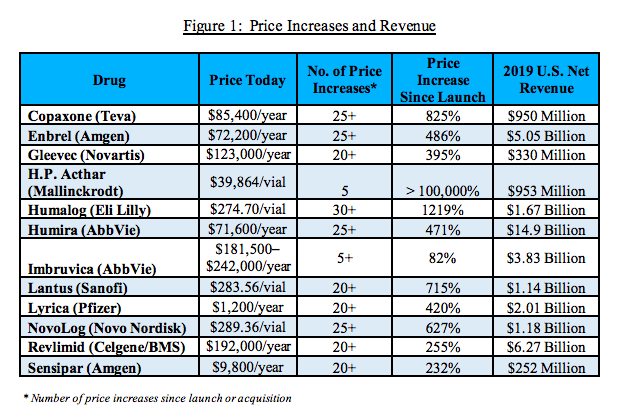What’s in the Congressional drug pricing report?
In January 2019, the Congressional Committee on Oversight and Reform, led by Carolyn Maloney (D-NY) launched an investigation into the pricing and business practices of pharmaceutical companies. Nearly three years and 1.5 million pages of internal documents later, the report is finally here.
What did they investigate?
Since this is a government investigation, the committee focused on the drugs that cost the most to Medicare, and the companies that make these drugs. These treatments ranged from cancer therapies to insulin, including both rare disease drugs and drugs for chronic conditions. The committee looked at how pharma companies keep prices high, what justifications they use for raising prices, and how this impacts patients.
What did they find?
There is a ton of findings within this nearly 269-page report, so it would be impossible to include it all. Here are some of the report’s key conclusions:
It’s not a coincidence that drug prices are much higher in the US than in other countries. Internal documents show that pharma companies target the US for price increases because Medicare can’t negotiate, while keeping prices flat or lowering them in the rest of the world.
Of the 12 drugs they looked at, ten of them had increased in price 20 times or more since they came to market. Almost every drug at least tripled in price since its launch; one drug’s price increased by more than 1000 times. These 12 drugs gave companies a combined revenue or $38.5 billion in 2019.

Medicare loses a ridiculous amount of money from overpriced drugs. Taxpayers could have saved more than $25 billion over five years for just seven drugs—Humira, Imbruvica, Sensipar, Enbrel, Lantus, NovoLog, and Lyrica—if Medicare had been able to negotiate the price. For three insulin products alone, Medicare lost out on $16.7 billion in seven years, because of how overpriced these medications are.
Although pharma companies typically blame price increases on middlemen like pharmacy benefit managers, pharmacies, and wholesalers, internal documents showed that the “net prices” — prices accounting for all discounts and rebates– still increased significantly for most of these drugs.
The investigation found that drug companies raised prices aggressively and strategically, increasing prices more when generic drugs were about to be introduced, or raising prices to meet certain revenue targets or executive bonus targets.
Besides just raising prices, drug companies also employ strategies to block competition such as:
- Securing “orphan drug” designation for a drug (which gives the company monopoly power) and then marketing it for other non-rare diseases. For example, AbbVie has obtained orphan drug protections for Humira, even though Humira is one of the best-selling drugs in the world.
- Abusing the FDA’s pediatric exclusivity period, which grants a six month extension of market exclusivity for companies to conduct studies of drugs in children
- Shifting patients to new products or formulations of a drug just before a generic version for the old formula goes on the market (this is called “product hopping” or “evergreening”)
- “Shadow pricing,” or raising prices in lock-step with companies making similar drugs. The three large insulin companies are notorious for doing this.
- Paying third-party foundations to cover Medicare patients’ copays for expensive drugs, to disincentivize patients from finding generics
- Making PBMs and insurers exclude competitors in exchange for allowing their drug to be covered on their formularies
The investigation is full of outrageous findings like this– for those who want to learn more, I would recommend checking out the full report.
What can we do?
The committee concludes, “These practices persist because the highly complex U.S. pharmaceutical market creates perverse incentives to raise prices, and unlike in other countries, drug companies can do so without limitation. Consumers will pay whatever they can afford—and often what they cannot—for lifesaving drugs.”
Allowing Medicare to negotiate drugs prices is a clear first step toward getting these prices under control. Closing loopholes in FDA incentive programs, requiring pharma companies to make their net prices public, and putting copay caps on essential medicines like insulin, would also be helpful in ameliorating our drug price crisis.
